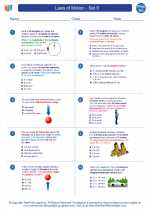Chemical Composition
Chemical composition refers to the identity and relative proportions of the elements that make up a substance. This concept is important in understanding the properties and behavior of matter.
Atoms and Elements
Atoms are the basic building blocks of matter. Each element is composed of a unique type of atom. The periodic table of elements organizes all known elements based on their atomic number and chemical properties.
Chemical Formulas
Chemical formulas represent the composition of compounds and molecules using the symbols of the elements involved. For example, the chemical formula for water is H2O, indicating that each water molecule consists of two hydrogen atoms and one oxygen atom.
Percent Composition
The percent composition of a compound describes the relative mass or moles of each element within the compound. It is calculated by dividing the mass or moles of a specific element by the total mass or moles of the compound, and then multiplying by 100 to express the result as a percentage.
Stoichiometry
Stoichiometry involves the quantitative relationships in chemical reactions. It allows us to predict the amount of products formed and reactants consumed in a chemical reaction based on the balanced chemical equation and the molar ratios of the reactants and products.
Study Guide
- Understand the structure of atoms and the organization of the periodic table.
- Practice writing and interpreting chemical formulas for various compounds and molecules.
- Learn to calculate percent composition for given compounds.
- Master the concept of stoichiometry and its application in chemical reactions.
- Work on solving problems and numerical exercises related to chemical composition.
◂Physics Worksheets and Study Guides High School. Laws of Motion - Set II

 Worksheet/Answer key
Worksheet/Answer key
 Worksheet/Answer key
Worksheet/Answer key
